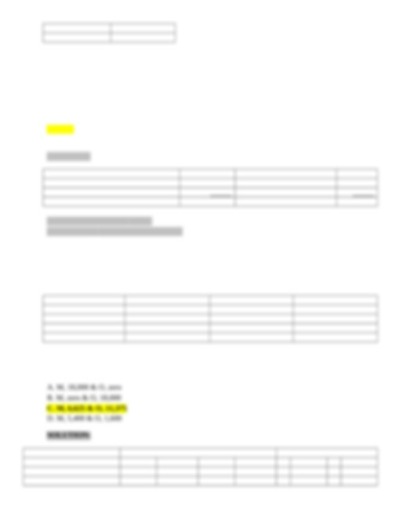Bookkeeping
Capital Expenditure Meaning, Example and Accounting Treatment

You purchase the machine for $1,500, but you spend $600 on new parts to fix the machine before you sell it for $2,000. Between the cost of the machine and its new parts, you spend $2,100. This is considered a capital loss of $100 because you spent more money on the total investment ($2,100) than you received for the sale ($2,000).
SEC Adopts New Private Fund Adviser Rules – Ropes & Gray LLP
SEC Adopts New Private Fund Adviser Rules.
Posted: Tue, 29 Aug 2023 19:46:14 GMT [source]
Capital is generally considered a liability because a business must repay the capital’s owner. For instance, debt capital requires regular loan repayments, often to financial institutions. Equity capital requires the payment of dividends coupled with good performance in return for capital investment. An investor won’t stay around for long if the company isn’t performing. Raising public equity capital typically requires a company to make shares available via the stock exchange.
Beyond money, capital assets can refer to a company’s manufacturing equipment and physical facilities. It may also allude to assets held to generate capital, such as real estate and inventory. The term “capital” can refer to several elements of a business. These financial assets are commonly used to help the company deal with expenditures. Equipment purchases, wages, and deals with vendors may all come out of this type of capital.
Welcome to Accounting Education
Debt is a loan or financial obligation that must be repaid in the future. It has an interest expense attached to it, which is the cost of borrowing money. The cash received from borrowing money is then used to purchase an asset and fund the operations of a business, which in turn generates revenues for a company. In the public and private equity forms, investors gain shares of the company in return for their investment. Private equity capital is one of the most popular forms of startup capital through venture capitalists, VC firms, and/or angel investors.
Our team of reviewers are established professionals with years of experience in areas of personal finance and climate. About the Author – Dr Geoffrey Mbuva(PhD-Finance) is a lecturer of Finance and Accountancy at Kenyatta University, Kenya. He is an enthusiast of teaching and making accounting & research tutorials for his readers. Harold Averkamp (CPA, MBA) has worked as a university accounting instructor, accountant, and consultant for more than 25 years. He is the sole author of all the materials on AccountingCoach.com. Let’s take a look at two of the primary meanings of the term.
- Equity can also be built by retaining the residual profits, for instance, if a company generates a net income and does not payout to the shareholders, equity increases.
- Whether you want to approach investors, lenders, or investment bankers, you need to plan thoroughly.
- If you start a business with USD 10,000, your capital account starts with USD 10,000.
When a person puts capital into a business, that person expects a profit in exchange for the capital investment, and a person’s capital is used to earn more capital. Keeping track of your bookkeeping processes ensures business continuity. A detailed recording of transactions in your Capital accounts helps you measure the increase/decrease in investments and interests and know your company’s financial health.
Debt Capital
Individuals quite rightly see debt as a burden, but businesses see it as an opportunity, at least if the debt doesn’t get out of hand. It is the only way that most businesses can obtain a large enough lump sum to pay for a major investment in the future. But both businesses and their potential investors need to keep an eye on the debt to capital ratio to avoid getting in too deep. To easily track capital in your books, you can opt to use accounting software. That way, you can record your capital quickly and avoid making accounting mistakes yourself. Plus, you can access numerous reports and financial statements to help make investments and decisions.

In order to fund this, Ana must use a variety of resources including the cash and short-term investments that the company holds as well as sell company stock to new investors. As stated previously, the distinction between capital and money can be a bit murky. Most of the time, when capital is not a physical asset but rather funds a company is using for investment or growth, it can seem like money is being counted as capital. The key distinction is whether or not a profit-motivated function is being performed by the money in any given scenario. Money is funds that are available to a business, often the result of profit but also acquired through loans and accepting outside investments. Money only becomes capital when it is being used by the business to grow their profit-producing assets or to invest in profit-seeking ventures.
A loan from others is a loan for the businessman, but it is considered capital when money is invested in a business. Capital accounts are a general ledger that keeps track of the rights of an individual/group of individuals’ ownership of a company from one accounting period to another. When starting a business, entrepreneurs often think of capital. Hence, capital accounts are pivotal in the process of transforming great business ideas into real-world solutions.
Capital Account
The total expenditure ₹53,000 is a Capital Expenditure because it has resulted in an increase in fixed assets. Installation charges will also be considered as Capital Expenditure as this amount was spent to make the machine ready for use. ₹1,00,000 spent on repainting the office building is not a Capital Expenditure because the fixed assets of the company have not increased by this expenditure.

On a balance sheet, subtract the purchase price from the sale price to get your capital gains. To round off our overview of capital, let’s examine capital gains and capital losses. Look to the working capital on a company’s balance sheet for a measure of short-term liquidity. Businesses need enough working capital to pay their financial obligations and cover debts. You invest $10,000 of your capital in purchasing the system, $5,000 in transit, and $750 in labor for repairs. Trading capital applies exclusively to the financial industry where brokerage companies need enough capital to support their investment strategies.
Information from the accounts can help design pricing strategies more in line with the ability to pay. The accounts can also inform where targeting of investments in water infrastructure can generate the largest impact on the economy. The formula for a capital account is determined using the accounting equation. So, first, here is the accounting equation, which is very important for calculating assets, capital, and liabilities.
Example: Capital gain
A classic example of this equity account is the portfolio of bonds that the company has invested in. Profit & loss due marked to the market value of this portfolio can be determined in other comprehensive income. Once the bonds have matured or sold the realized gain/loss is moved into net income. Many people take the term capital to be money in the broadest sense. In accounting, capital is the quantity of money that a person has in hand for investing.
- While physical capital and financial capital are reported as assets on the balance sheet, human capital is traditionally not included.
- The government taxes specific types of capital gains, and companies use capital losses to offset the full tax burden.
- Money can accumulate on a balance sheet with no risk or job creation.
- When an owner invests money in a company, they are buying a piece of the company.
- Sneha’s company, as a company, must be highly aware of the cost of capital that they obtain and must always strive for the optimal cost structure.
This capital could be equity capital, debt capital, or working capital based on how the company acquired the funds and how they intend to use them. The government taxes specific types of capital gains, and companies use capital losses to offset the full tax burden. Corporations submit these numbers quarterly and usually pay a tax on their capital gains at the end of their fiscal year.
Additional paid-in capital can be reduced when a company repurchases its shares. This account can also increase or decrease in value when the gain and loss occur due to the sale of shares. Importantly, they are linked to the System of National mrp and mrp ii 310 exam flashcards Accounts and its traditional indicators of economic performance, such as GDP. This means that results from forest accounts can be used by economic groups beyond the forestry sector, including agriculture, manufacturing and trade.
Singapore Guide – Individual Income Tax in Singapore Asia … – ASEAN Briefing
Singapore Guide – Individual Income Tax in Singapore Asia ….
Posted: Mon, 04 Sep 2023 11:04:05 GMT [source]
A business may choose to allocate its capital to labour and building expansions. It may also invest capital into assets like tools and machinery. The goal is always to invest capital so you receive a higher return than the cost of your capital. Many capital assets are illiquid—that is, they can’t be readily turned into cash to meet immediate needs. Trading capital is a term used by brokerages and other financial institutions that place a large number of trades daily.
What are the Examples?
In business and economics, the two most common types of capital are financial and human. This guide will explore all the above categories in more detail. The money an investor pays for shares of stock in a company becomes equity capital for the business. These include business losses and owner distributions, with the latter being when the owner withdraws capital from the capital pool for their own use. Annual reconciliations may also show capital accounts to be lower than expected.





